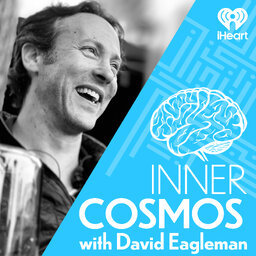Ep38 "Why is it hard to teach an old brain new tricks?"
Is it always harder to teach an old dog new tricks? Why is an older person slower to learn a new language but able to learn new faces easily? Why does Arnold Schwartzenegger have an accent but Mila Kunis doesn’t, even though neither spoke English as a child? Why is there a correlation between how tall a person is and how much salary they're likely to earn? What would it mean to say that you are born as many people but die as a single one? This week's episode dives into surprises about brain plasticity and why your flexibility changes throughout your lifetime.
 Inner Cosmos with David Eagleman
Inner Cosmos with David Eagleman


